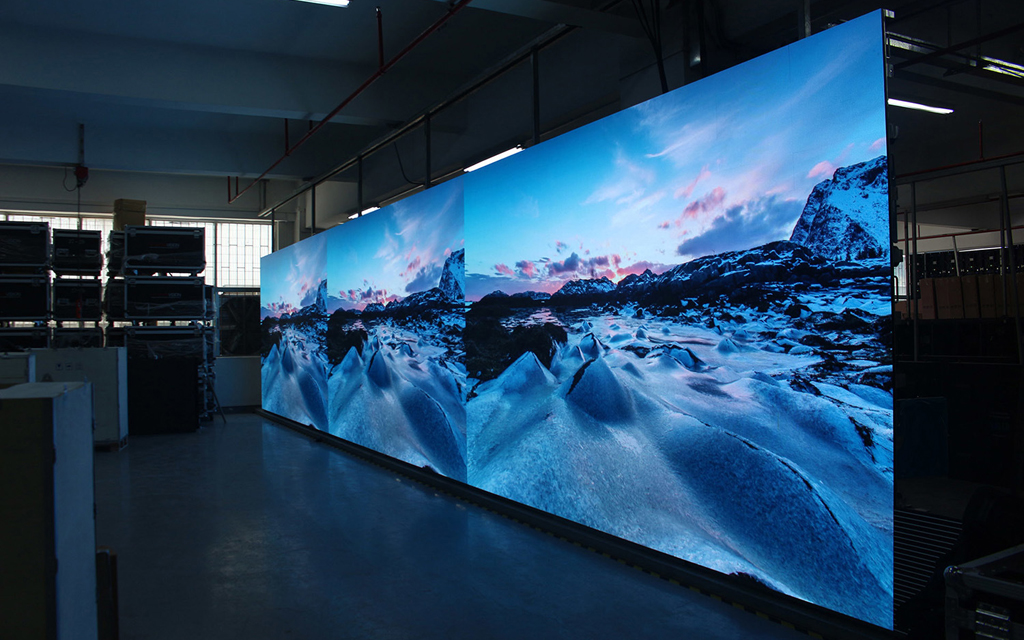
What are the reasons for the quality of LED screens?
Factors Affecting LED Screen Quality
Pixel Pitch
Pixel pitch refers to the distance between individual LED pixels on the screen. A smaller pixel pitch (2.6 px) typically results in higher resolution and better image quality.
The Importance of Pixel Pitch:
- Higher Resolution: Smaller pixel pitch produces more detailed images.
- Improved Clarity: Finer details and text appear sharper with a smaller pitch.
Color Rendering
The color rendering capabilities of an LED display affect the accuracy of color display. A wider color gamut and better color calibration can result in more vivid and realistic colors.
Improved Color Accuracy:
- Wide Color Gamut: Supports a wider range of colors.
- Color Calibration: Provides realistic color reproduction.
Brightness and Contrast
The brightness and contrast ratios of an LED display determine how well it can display images in different lighting conditions. Higher brightness and contrast levels can result in better visibility and image quality.
The main characteristics of brightness and contrast:
- High brightness levels: Provides visibility in bright lighting conditions.
- High contrast ratios: Provides deeper blacks and brighter whites.
Viewing Angle
The viewing angle of an LED display screen refers to the maximum angle at which the screen can be viewed without significant loss of image quality. A wider viewing angle ensures that the screen can be viewed from a variety of positions without distortion or color shift.
Benefits of Wide Viewing Angles:
- Multiple Viewers: Suitable for viewers viewing from multiple angles.
- Consistent Picture Quality: Maintains clarity and color accuracy.
Refresh Rate
The refresh rate of an LED display determines how quickly it can update the image on the screen. A higher refresh rate can result in smoother motion and reduced motion blur, especially for fast-moving content.
Benefits of Refresh Rate:
- Smooth Motion: Ideal for fast-moving content like sports or movies.
- Reduced Motion Blur: Provides a clear image during fast-moving action.
Uniformity
Uniformity of brightness and color across the entire screen is important for consistent viewing. Any variations in brightness or color can result in uneven display.
Achieving Uniformity:
- Constant Brightness: Provides uniform illumination across the entire screen.
- Color Consistency: Prevents visible gradients or spots.
Durability
The durability and build quality of an LED display can impact its overall performance and longevity. A well-made display with high-quality components is less likely to develop issues or degrade over time.
Importance of Build Quality:
- Durable Construction: Resistant to physical damage and wear.
- Longevity: Maintains performance over long periods of time.
Signal Processing
The quality of the signal processing technology used in an LED display can affect its ability to handle different types of content and input sources. Good signal processing can result in smoother video playback and reduced artifacts.
Advanced Signal Processing:
- Enhanced Video Playback: Provides clear, smooth motion.
- Reduced Artifacts: Minimizes visual distortion and noise.
Environmental Factors
Environmental factors such as temperature, humidity, and dust can affect the performance and lifespan of LED displays. Extreme temperatures, high humidity, or excessive dust can cause deterioration in image quality and overall performance.
Environmental Impact Management:
- Temperature Control: Prevent overheating and thermal damage.
- Humidity Management: Protect against condensation and corrosion.
- Dust Protection: Use filters and covers to prevent contaminants from entering.
Installation and Maintenance
Proper installation and regular maintenance are critical to maintaining the quality of LED displays. Improper installation or lack of maintenance can lead to issues such as image distortion, dead pixels, or uneven brightness.
Installation and Maintenance Best Practices:
- Professional Installation: Ensure screens are properly aligned.
- Regular Cleaning: Remove dust and debris to prevent clogging.
- Routine Inspections: Check for signs of wear or malfunction.
- Timely Repairs: Address issues promptly to prevent further damage.
Conclusion
By taking these factors into account – pixel pitch, color rendering, brightness and contrast, viewing angle, refresh rate, uniformity, durability, signal processing, environmental conditions, as well as proper installation and maintenance – you can ensure that your LED screens will perform optimally and provide a high-quality visual experience.






